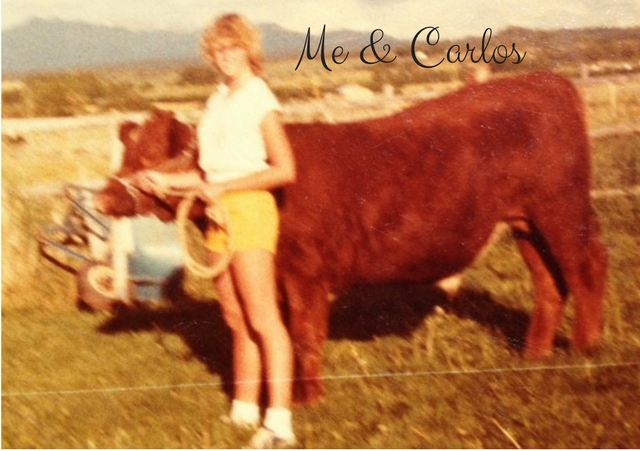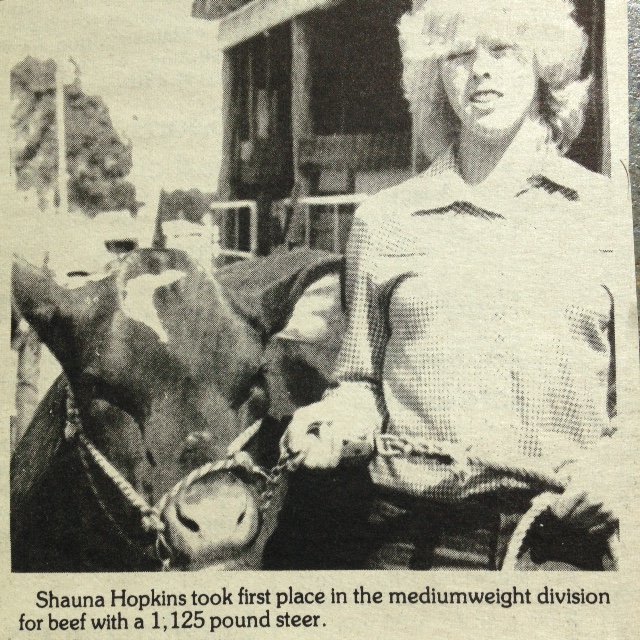We are at the height of grilling season, and for many of you that might mean throwing a nice steak on the grill. But for years we have been told to cut back on beef. The general dietary consensus has been that beef raises your cholesterol, and clogs your arteries. So can beef be part of a healthy diet? Well the issue is a little more complex than “yes” or “no”, so let’s look at some of the finer points.
If we go back in time, and look at the Paleolithic diet of our ancestors, we see that animal foods were an important part of the diet. According to analyses by Loren Cordain of Colorado State University, one of the leading experts in Paleolithic nutrition, contemporary hunter-gatherers derive 40 – 60 percent of their dietary energy from animal foods (meat, milk and other products). In fact, humans have been eating meat and animal foods for the duration of human history.
So if humans are designed to eat meat, why does beef get a bad reputation? It is not so much in the meat itself, as the fat composition of the meat. The vast majority of animals raised in this country are fattened on a grain-based diet, corn primarily, but even soy. Grain-fed animals produce meat that is higher in saturated fat, and it also contains higher amounts of omega-6 fats, which can lead to inflammation.
But if we look more closely, we learn that cattle are not meant to eat grain, they are natural ruminates designed to dine almost exclusively on fresh grass. Consequently, when the diet of the livestock is changed to a grass based diet, then the fat profile of the meat improves. Grass-fed animals have less saturated fat, less omega-6 fat, and more omega-3 fats which are good fats that help to prevent inflammation and reduce the risk for cardiovascular disease. Grass-fed meat is also leaner; some cuts have 1/3 to 1/2 the fat found in a grain-fed cut, which makes a big difference in creating a healthy diet. And of course, it is also an excellent source of protein.
Another problem associated with grain-fed animals is the enormous amount of antibiotics needed to keep them healthy in the unnatural living situation they are exposed to in the feedlots. According to the Union of Concerned Scientists, 24.6 million pounds of antimicrobials are used in the livestock systems in the United States each year. This equals approximately 70% of the all antibiotics produced in the nation for livestock and humans. And the majority of the antimicrobials are used in the absence of disease. These antimicrobials include tetracycline, penicillin, & erythromycin — antimicrobials that are important to human use. The danger with extensive use of such agents is the risk for creating antibiotic resistance in the human population. In contrast to our livestock systems, the European Union has prohibited nontherapeutic agricultural use of antimicrobials that are important in human medicine.
So what can you do to make sure you are eating high quality beef products? First, if you can only obtain conventionally raised beef, restrict the amount of beef you consume and stick to the leanest cuts. Toxins and residues from the antibiotics can accumulate in the fat tissue. Lean cuts include tenderloin, flank steak, sirloin, eye of round, top round, and bottom round.
Next best is to purchase beef that has been raised humanely, without being fed or given animal by-products, antibiotics, or artificial growth hormones. One widely distributed product like this is Country Natural Beef — available to us at local food stores here in the Pacific Northwest. Country Natural Beef raises their animals on grass, and then finishes them on grains for a shorter time than conventional fed beef. The grain that they are finished on, however, isn’t necessarily organic.
The best beef, in my opinion, comes from animals that exclusively feed on grass and hay. However, if you want to eat beef that has been raised exclusively on grass, while using sustainable ranching methods, you will have to look off the beaten path. Visiting your local farmer’s market is a great place to start. They generally will have one or two local ranchers selling grass fed beef (and other meat) products. To our benefit however, most natural food markets and even some conventional supermarkets now sell grass fed beef. You can easily find it at Whole Foods or the PCCs, and I have even seen grass fed beef at the Town and Country stores in the Puget Sound Area (Ballard Market, Central Market, etc.), among others. Grass fed beef is much more popular today, than it was ten years ago, so for that reason, more widely available. Also, check out BlueValley Meats. They deliver once per month to the Seattle area. You order on-line, and then pick-up on a certain day at a drop-off location of your choosing. It isn’t quite as convenient, but they do have some of the best prices I have seen, and you are insured a good product. All meat comes frozen.
One last note here on grass fed beef – currently there isn’t a national standard for what “grass fed” means, like there is with “organic”. Without a national certification to ensure that the animals are in fact 100% grass fed, it does leave some gray area for interpretation and implementation at the ranch level. Choosing ranchers you can trust, like those at the farmer’s markets or Blue Valley Meats, can go a long way to ensure you are getting a high quality product.
I didn’t want to leave this conversation without sharing my own experience raising cattle while being part of a ranching family during my adolescence in Colorado. And if you know anything about ranching, you know that it is a family affair. I owned a few cows and their eventual offspring, and also had a 4-H steer. For your enjoyment, here is a picture of me with my prize winning steer named Carlos. Isn’t he cute!
Carlos was born on a very cold February night on our ranch in Colorado. Our ranch was located on a mountain plateau at about 7,000 feet in Southwest Colorado. When my dad went out in the early morning to check his herd, he found that Carlos’ mother had given birth, and he was lying there with his tongue frozen to the ground. We quickly moved him inside to warm him up and revive him, before he was put back out with his mom. He grew up to be a healthy specimen of what a good beef steer should be, and I chose him to be my 4-H steer. I fed him out, (yes, we did use corn – though it wasn’t GMO back in those days) and I showed him at our county fair. I’m proud to say he won first place for his weight division! He was a very friendly guy, loved being scratched, and even let me ride him. And he did love that corn! I do admit, I felt really bad when he went to be slaughtered. But as a ranch kid, you learn pretty quickly about the circle of life. It is hard to avoid it when you live on a ranch, and are out in the middle of nature everyday.
At last, since I’m taking you back with my memories of all things beef, do you remember that classic “Where’s the Beef” commercial from Wendy’s? Here’s a link to the video for a good laugh! Where’s the Beef? Commercial
I hope this gives you some incentive to move over to grass fed meats if you have not already. Happy Grilling!
As always, if you found this blog post helpful, please share with family or friends.







